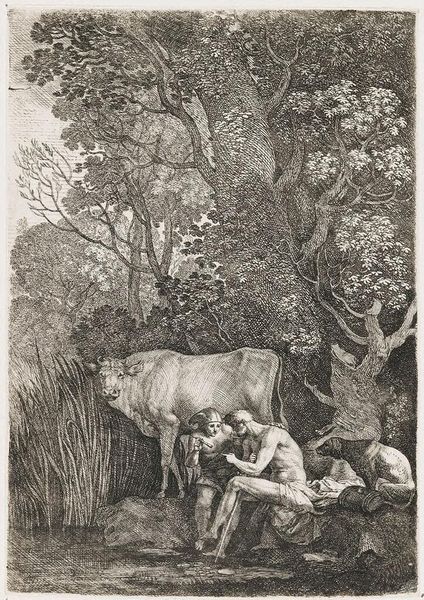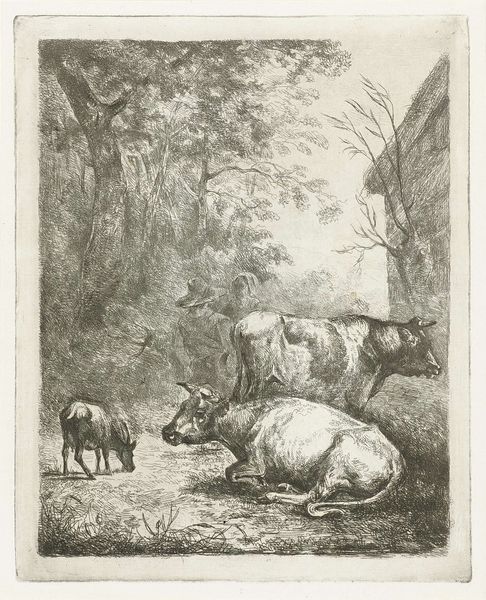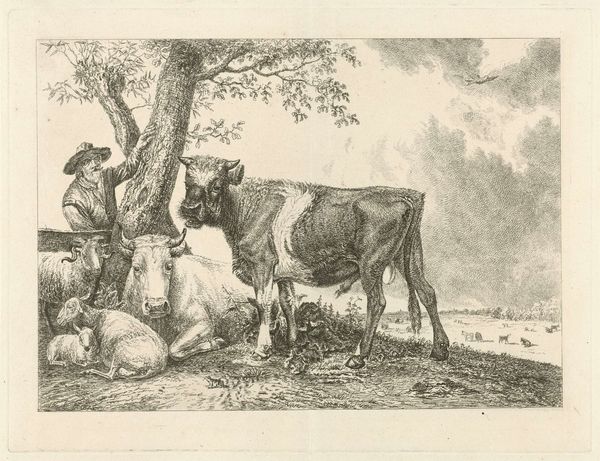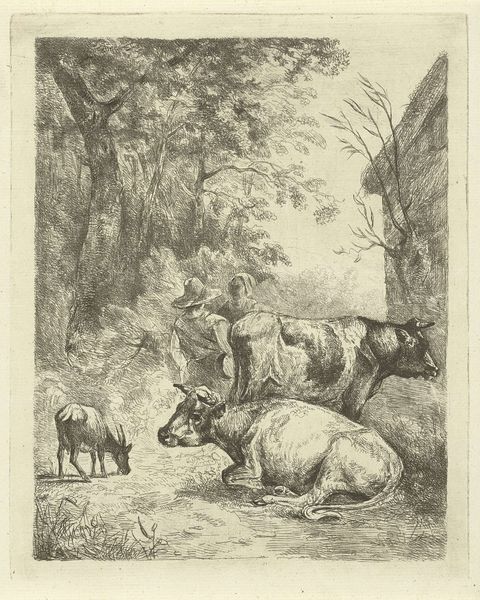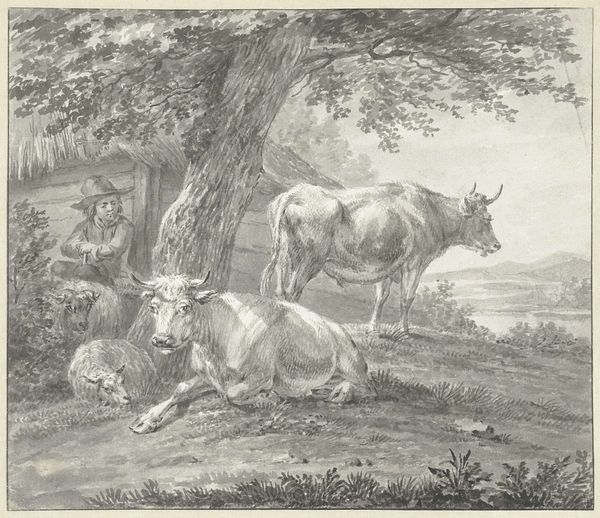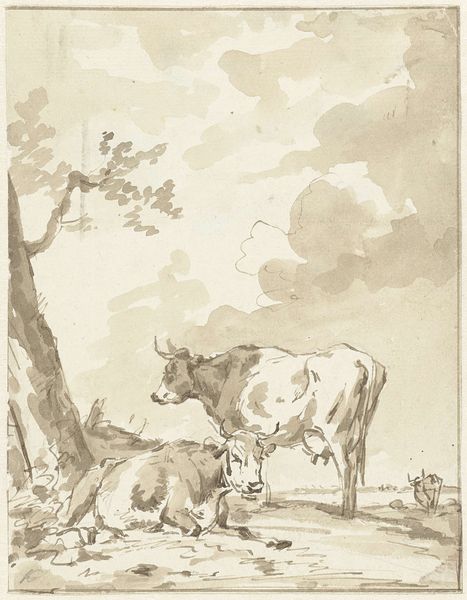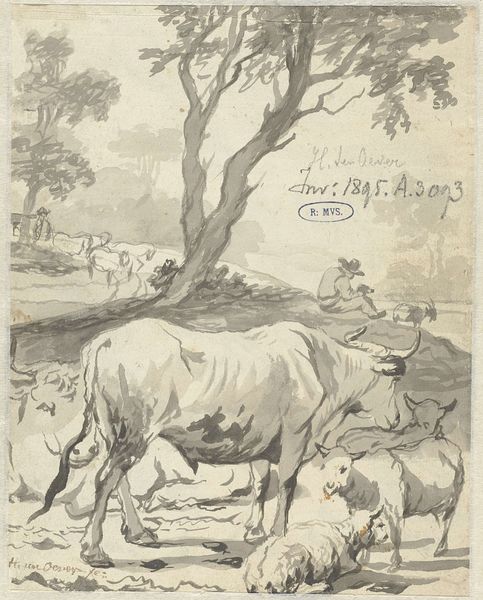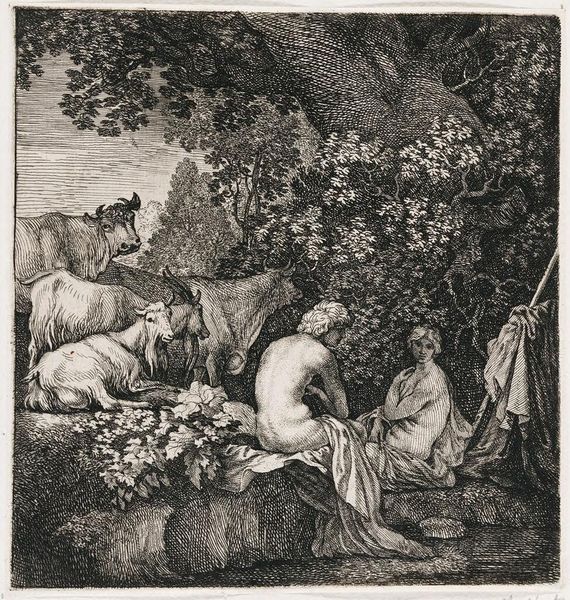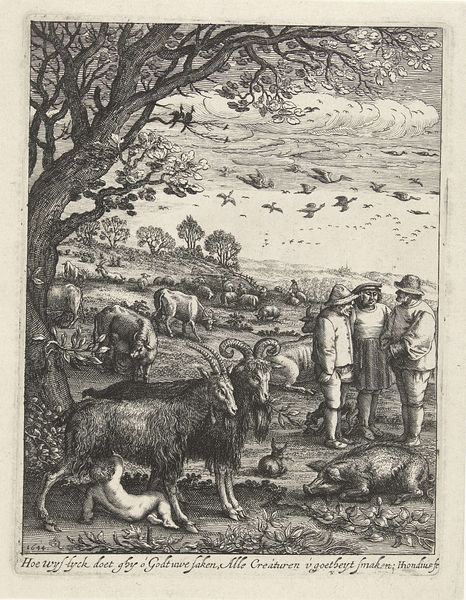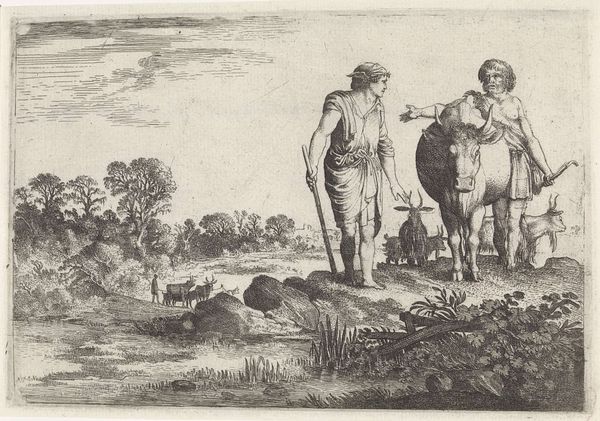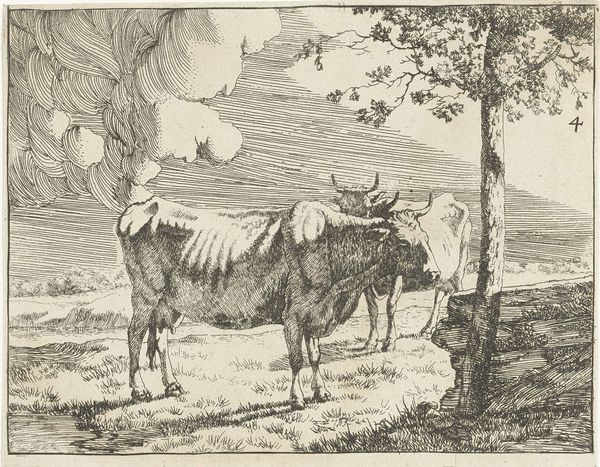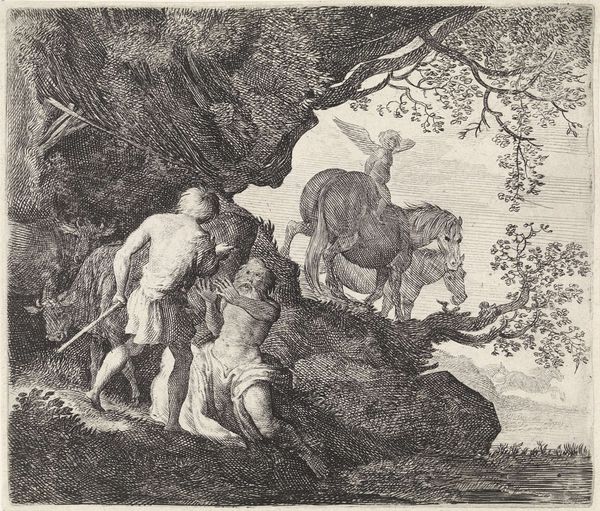
drawing, print, etching
#
drawing
#
narrative-art
#
baroque
# print
#
etching
#
landscape
#
figuration
#
pencil drawing
#
history-painting
Dimensions: height 256 mm, width 180 mm
Copyright: Rijks Museum: Open Domain
Curator: Ah, the heavy chiaroscuro! Immediately gives it a sort of ominous feel, doesn't it? Almost like a stage set for some drama. Editor: Indeed. We're looking at a 17th-century etching titled "Mercurius slays Argus in his sleep" by Moyses van Wtenbrouck. The original print, from which this comes, was likely crafted somewhere between 1600 and 1647. Note the intricate detail rendered with etching techniques— it invites us to examine the materiality of printmaking in that era, challenging any simple notion of "high" versus "low" art. Curator: Right, the level of labor! But what strikes me is the peculiar pastoral quality juxtaposed with the violence of the narrative. A tranquil bovine observing impending doom, almost a darkly comic contrast to the divine mission at hand. It's both unnerving and strangely humorous. Editor: Precisely, a kind of Baroque contradiction perhaps? Wtenbrouck is very consciously referencing and then subverting classical narratives through his specific compositional choices. He presents the viewer with a commentary about production, about seeing, about power, really. Curator: And consider Argus! A multi-eyed giant, now a rather pathetic, drowsing figure. It all points to a deeper interrogation about the vulnerabilities inherent within structures of power and control. Editor: The way the foliage overwhelms the figures, further emphasizes the narrative in the landscape, creating a visual and conceptual framework within the conventions of baroque etching practices. Curator: In the end, this etching feels much less about divine triumph and more about the grim labor behind the curtain. This is not just depiction. Editor: Exactly. Examining this artwork provides a unique entry point for grappling with the intersections between materiality, social context, and mythological narratives. It is through that interdisciplinary inquiry, a much richer, nuanced dialogue happens, don't you think?
Comments
No comments
Be the first to comment and join the conversation on the ultimate creative platform.
